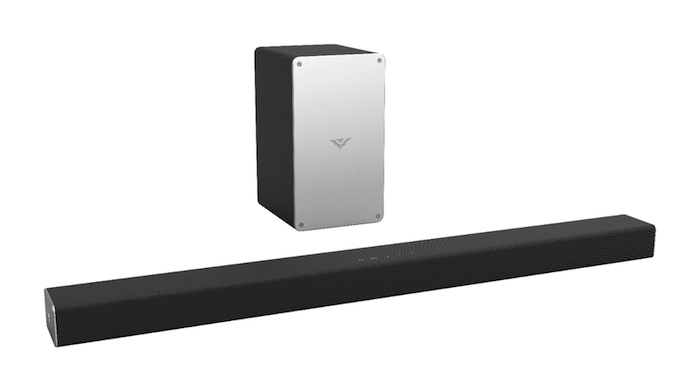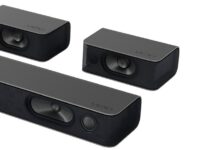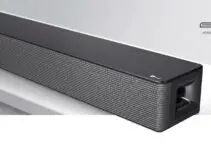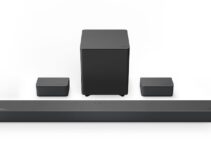With the Vizio soundbar, you can enjoy high-quality sound from your TV or any connected system. To ensure that you get the best audio quality, the soundbar comes with a range of audio settings that can be customized to suit your preferences.
One of these settings is the equalizer, which allows you to adjust the balance of audio frequencies to suit the content you are listening to.
In this guide, we will explain how to customize the Vizio soundbar equalizer settings, and how you can use it to get the best sound performance from your Vizio soundbar.

What is the Vizio Soundbar Equalizer?
The equalizer (EQ) allows you to adjust the balance of audio frequencies in a sound signal. It is often used to fine-tune the sound of a system to suit the content being played. For example, if you are listening to music, you might want to boost the bass frequencies to give the music more punch. On the other hand, if you are watching a movie with lots of dialogue, you might want to boost the midrange frequencies to make the voices easier to hear.
The soundbar equalizer typically consists of a series of sliders or controls that allow you to boost or cut specific frequency ranges. The exact number and range of frequencies will vary depending on the soundbar model, but most soundbars will have controls for the bass, midrange, and treble frequencies. Some models may also have additional controls for specific frequency ranges, such as the subwoofer or the high frequencies.
How the Vizio Soundbar Equalizer Works
The soundbar equalizer works by adjusting the level of specific frequency ranges in the audio signal. When you boost a frequency range, the soundbar amplifies that range, making it louder and more prominent in the overall sound. When you cut a frequency range, the soundbar reduces the level of that range, making it quieter and less noticeable.
To use the soundbar equalizer, you will need to adjust the controls to boost or cut the desired frequency ranges. For example, if you want to boost the bass frequencies, you would move the bass control up. If you want to cut the treble frequencies, you would move the treble control down. You can adjust the controls individually or in combination to achieve the desired sound.
Setting Your Vizio Soundbar Equalizer Settings for the Best Sound Performance
To get the best sound performance from your Vizio soundbar, you will need to adjust the equalizer settings to suit the content you are listening to. Here are some general guidelines to help you get started:
- Adjust the bass and treble controls to suit your personal preferences. If you like a lot of bass, you can boost the bass control. If you prefer a brighter sound, you can boost the treble control.
- Fine-tune the midrange frequencies to suit the content you are listening to. For example, if you are watching a movie with lots of dialogue, you may want to boost the midrange frequencies to make the voices easier to hear.
- Experiment with the other frequency controls to see how they affect the sound. Some soundbars may have additional controls for specific frequency ranges, such as the subwoofer or the high frequencies. You can adjust these controls to suit your preferences and the content you are listening to.
Other Audio Settings You Can Use
In addition to the equalizer, your Vizio soundbar may have other audio settings that you can use to customize the sound. Some common audio settings include:
- Dolby Atmos: This is a surround sound format that uses multiple channels and speakers to create a more immersive listening experience. If your soundbar supports Dolby Atmos, you can use this setting to get a more realistic and lifelike sound.
- Night mode: This is a setting that adjusts the volume levels to reduce the impact of loud noises, such as explosions or car chases, while still allowing you to hear quieter sounds, such as dialogue or music. This can be helpful if you are watching TV late at night and don’t want to disturb others.
- Dialog enhancement: This is a setting that boosts the midrange frequencies to make dialogue easier to hear. It can be useful if you are watching a movie or TV show with lots of dialogue and want to make sure you don’t miss any important information.
Audio Features of the Soundbar
Your Vizio soundbar may have a range of audio features that can help you get the best sound performance. Some common features include:
- Multiple drivers: A soundbar with multiple drivers can deliver a more full-range sound, with more detailed and accurate audio reproduction.
- Subwoofer: A built-in subwoofer can add extra depth and impact to the bass frequencies, making for a more immersive listening experience.
- Bluetooth connectivity: This allows you to stream music from your phone or tablet to the soundbar wirelessly.
- HDMI connectivity: With this, you can connect your soundbar to your TV or home theater system using an HDMI cable, which can provide a more stable and high-quality audio connection.
- Optical input: This is a type of audio connection that allows you to connect your soundbar to your TV or home theater system using an optical cable.
Getting the Best Sound Out of Your Vizio Soundbar
To get the best sound out of your Vizio soundbar, you will need to experiment with the various audio settings and features to find the combination that works best for you. Here are some tips to help you get started:
- Adjust the equalizer settings to suit the content you are listening to. For example, if you are watching a movie with lots of dialogue, you may want to boost the midrange frequencies to make the voices easier to hear.
- Experiment with the other audio settings, such as surround sound or dialog enhancement, to see how they affect the sound.
- Connect your soundbar to your TV or home theater system using the best audio connection available. This may be an HDMI or optical connection, depending on your equipment.
- Make sure the soundbar is positioned correctly in your room. The soundbar should be placed at ear level and facing towards you for the best sound performance.
- If your soundbar has a subwoofer, make sure it is positioned correctly. The subwoofer should be placed on the floor, facing towards you, for the best bass performance.






![Samsung Soundbar Keeps Switching to TV Speakers [FIXED] Samsung Soundbar Keeps Switching to TV Speakers [FIXED]](https://audiojust.com/wp-content/uploads/2023/03/samsung-soundbar-keeps-switching-to-tv-speakers-211x150.jpg)


